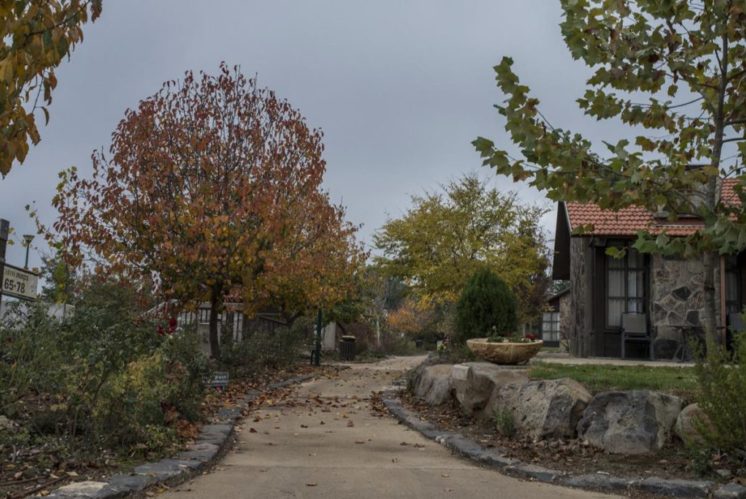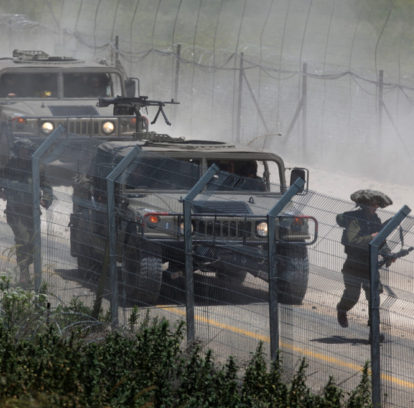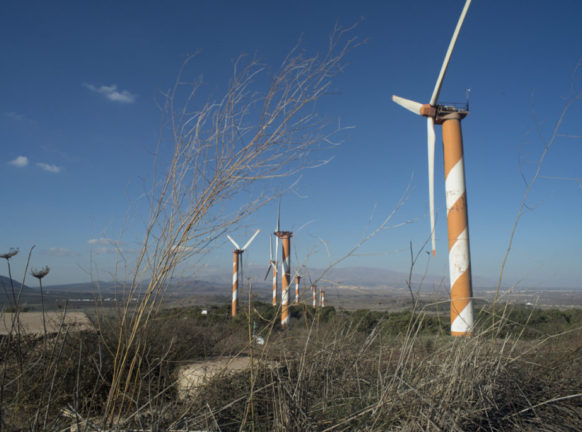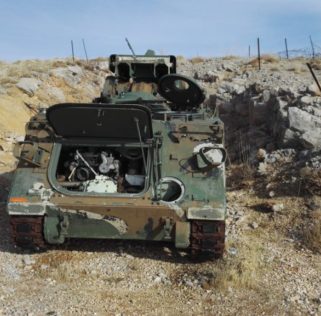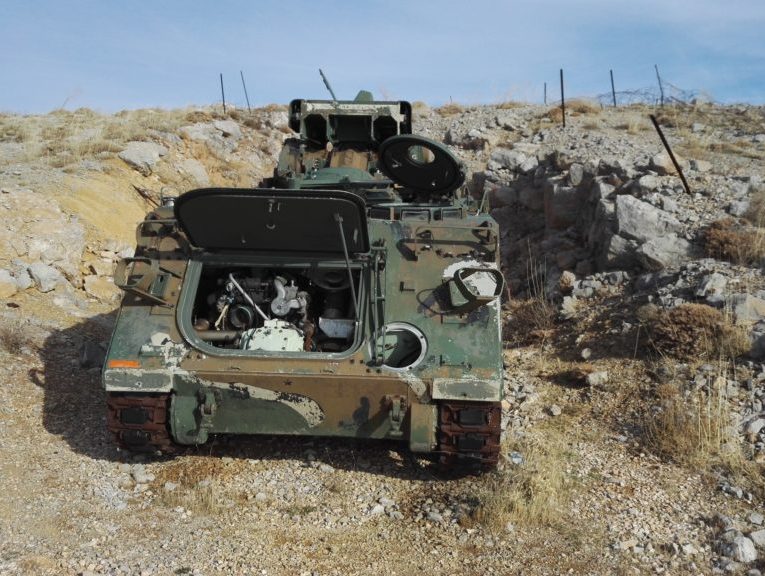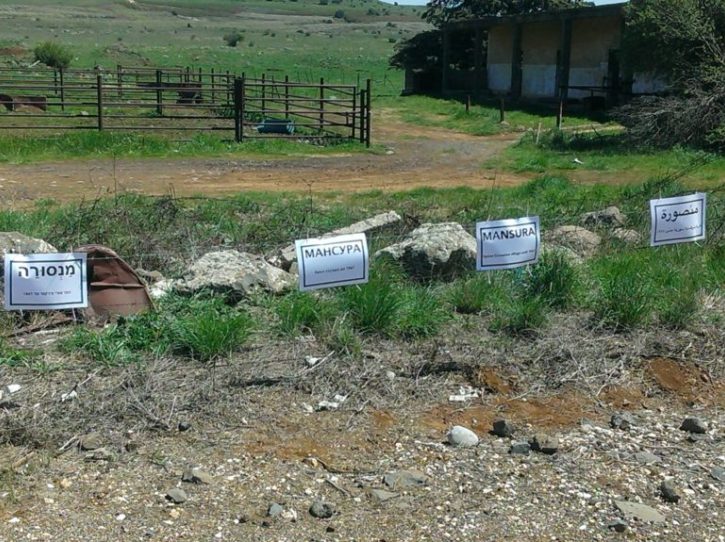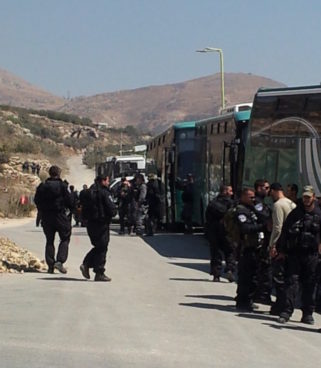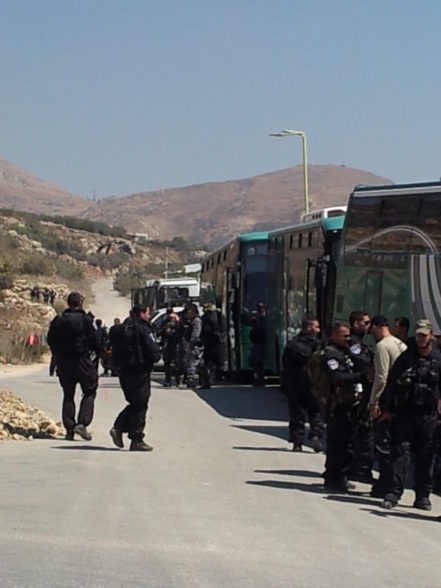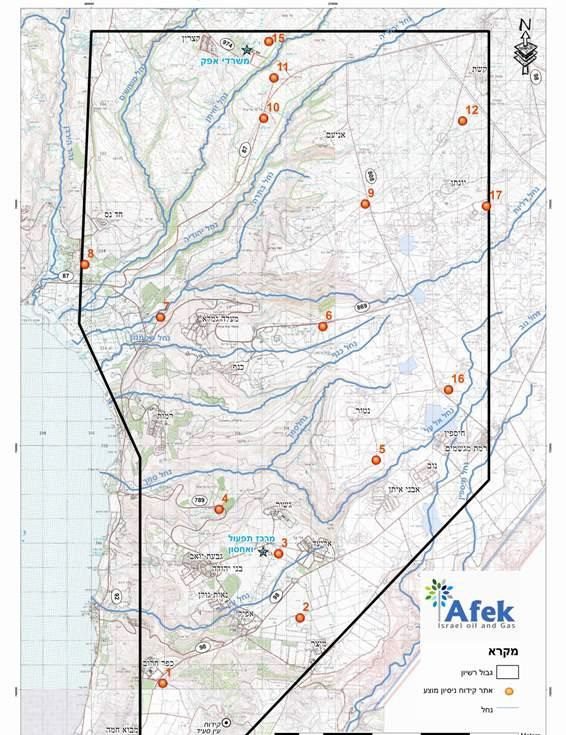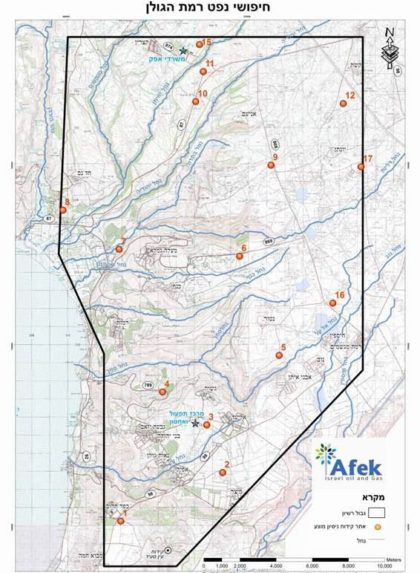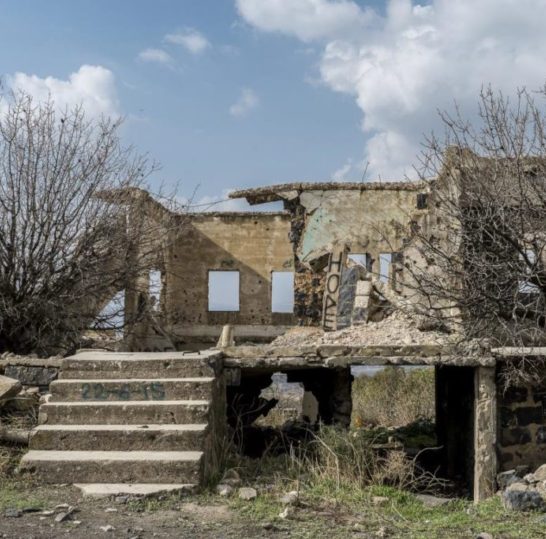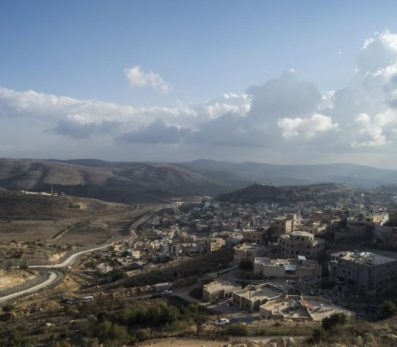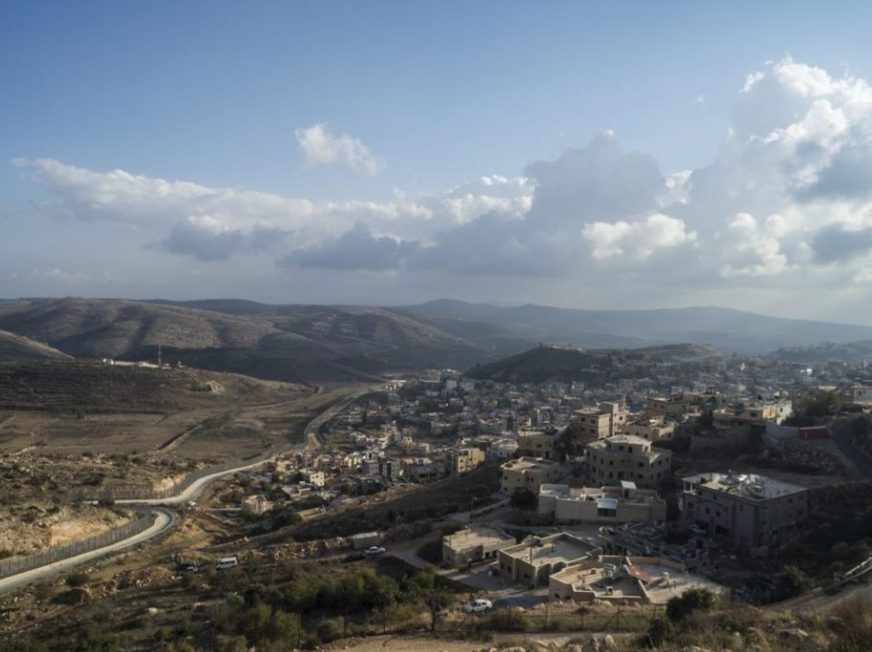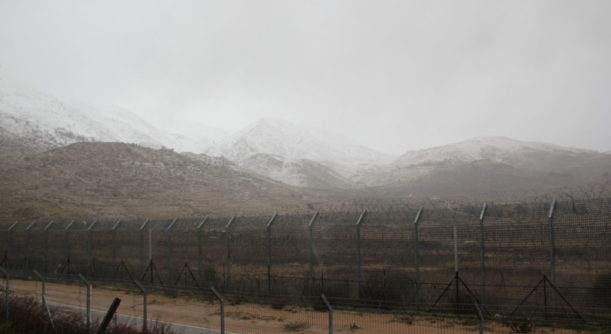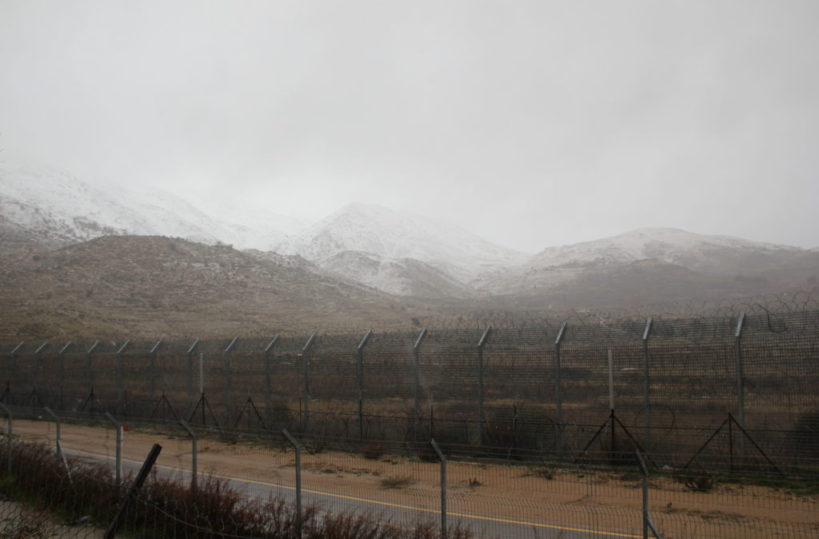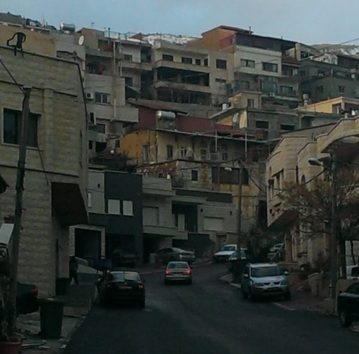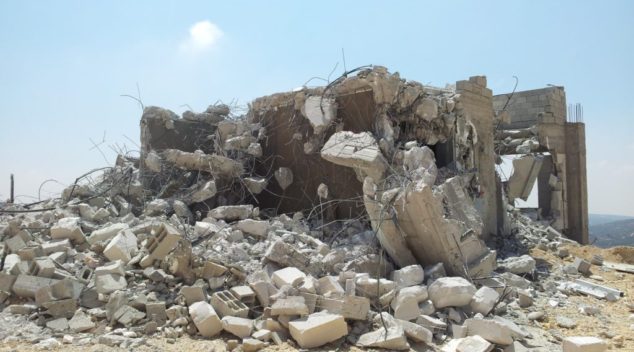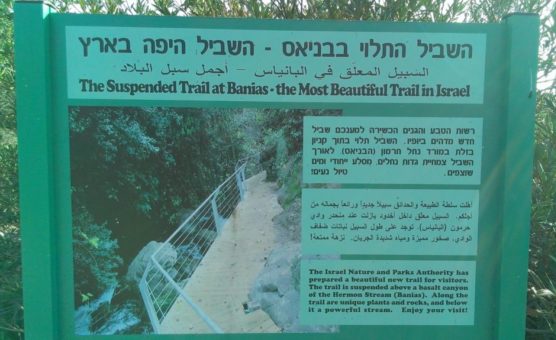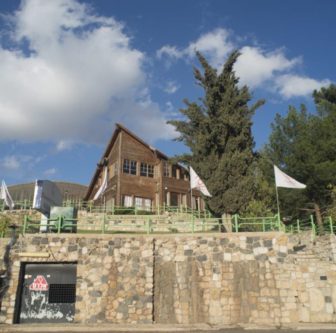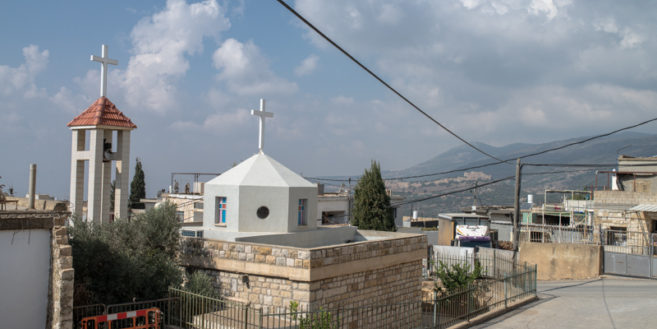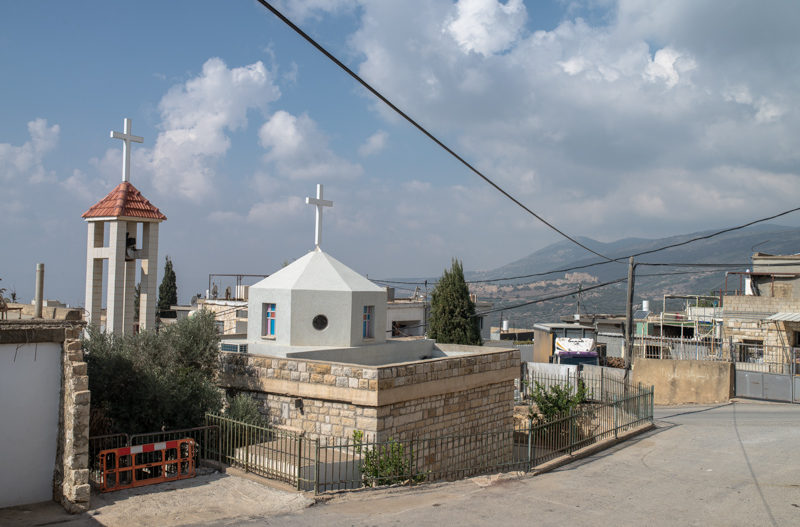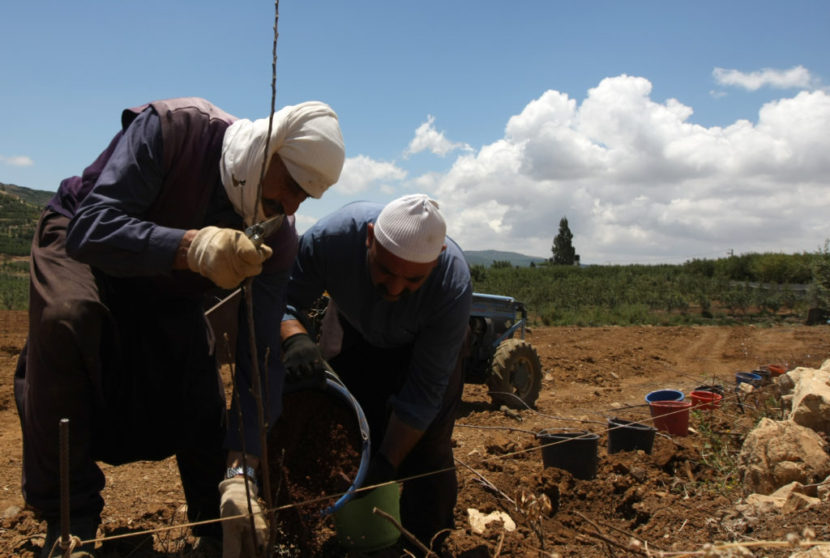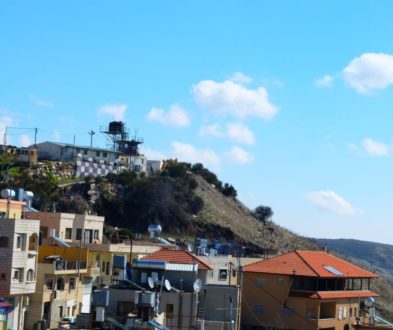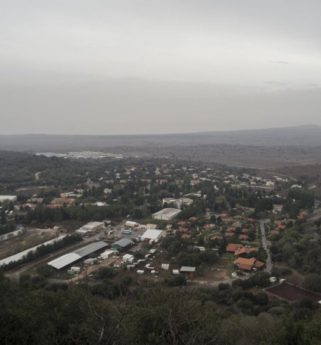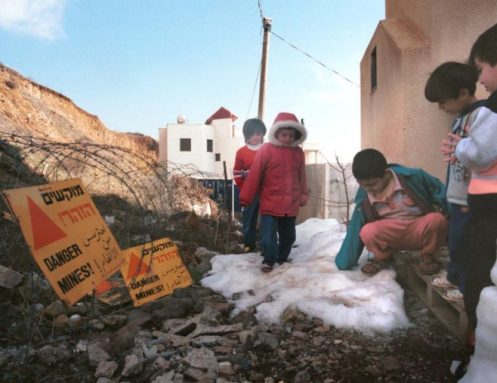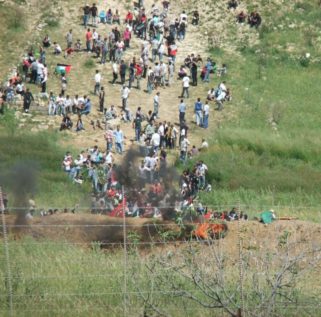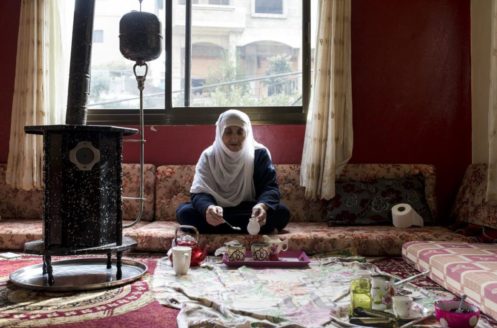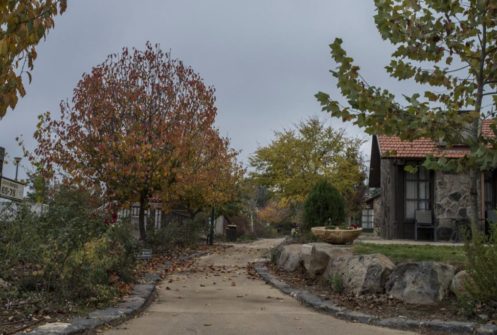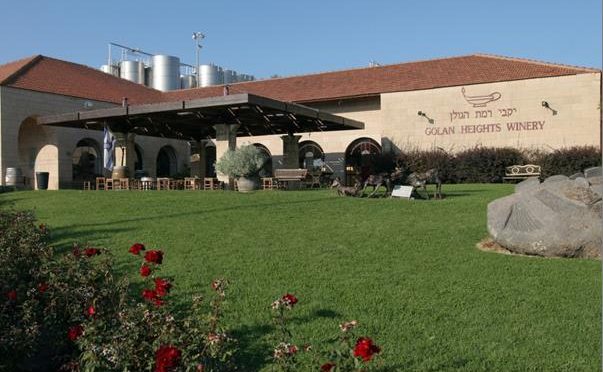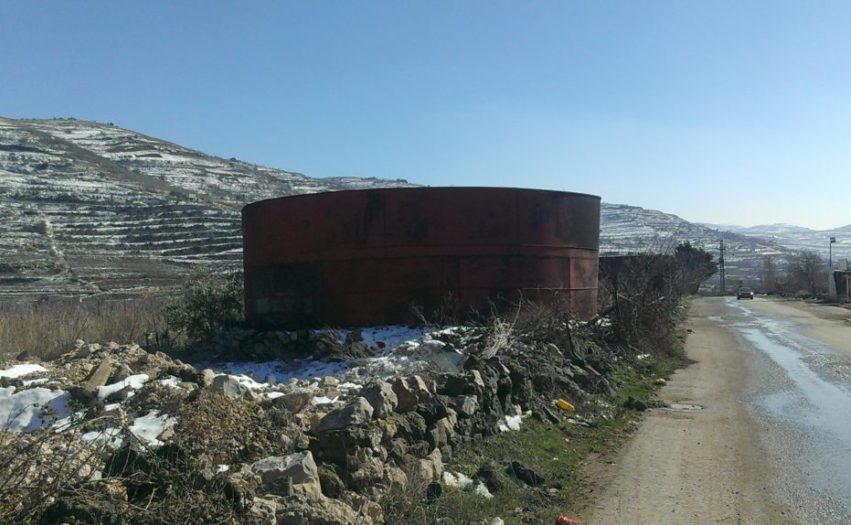عرض معرض الصور
مجموعة من ارشيف الصور لفريقنا التي جمعت على مر السنين.
Illegal natural resources exploitation
In 1993 Israel extended its exploitation of natural resources to wind. Turbines have been installed by Israeli companies, such as Mei Golan and Multimetrix, as well as a United States based company, AES Corporation. In 2014, the Ministry of National Infrastructures, Energy, and Water Resources also granted a conditional license to the Eurocom Group subsidiary Enlight Renewable Energy Solutions Ltd. for the production 400 megawatts of electricity from wind-driven turbines in the Occupied Syrian Golan.
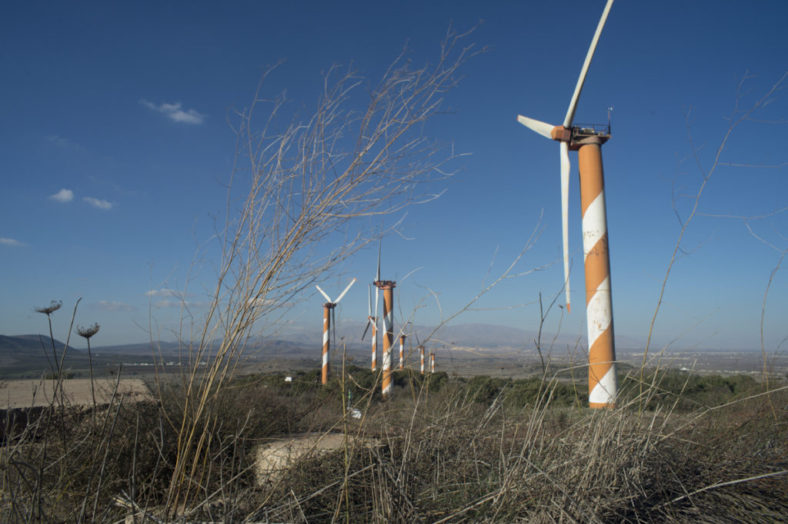
Entrance to an illegal Israeli settlement
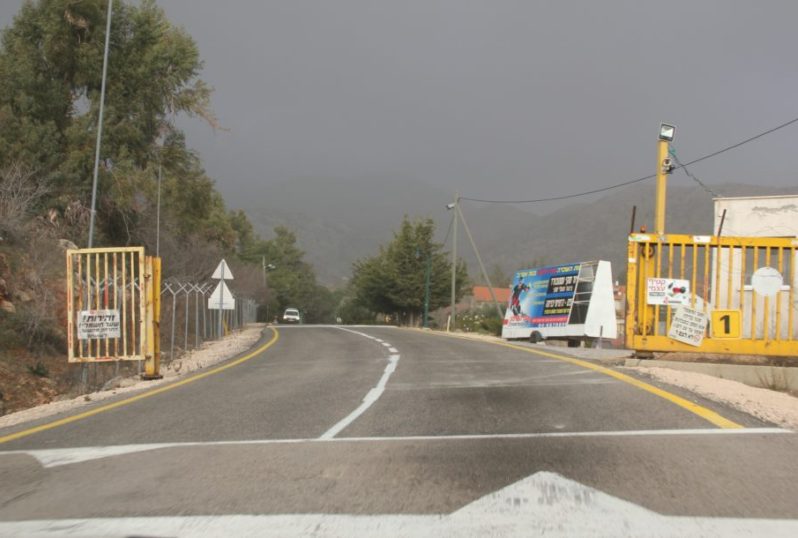
Building destroyed by Israeli military training in Ein-Fiet
Israel succeeded in depopulating the Golan through a number of means, including its regime of Military Orders that were introduced to administer the newly occupied territory and declare certain areas closed military zones, thus preventing the inhabitants from returning even after the war. Military Order 39 of the 27th of August 1967, for instance, ordered that 101 villages in the Occupied Golan be declared closed military zones. Nobody was allowed to enter the villages listed without special permission. Anyone who violated this order was subject to a punishment of five years imprisonment or a fine of five thousand Israeli Liras, or both.

Neve Ativ - Illegal Israeli settlement
Neve Ativ - often compared to a 'Swiss Alpine village' by travel companies - was built over the destroyed Syrian village of Jubatha el Zeit. Jubatha el Zeit was destroyed by the Israeli authorities to make way for a ski resort. Today, in addition to the Israeli tourism industry, many international travel companies promote accommodation and tourist activities in illegal Israeli settlements.

Church of Banias
The church was damaged during the 1967 war and afterwards abandoned. Before the 1967 uprooting and expulsion of the local Syrian population, only 6% of the Golan population was Druze. Like Greater Syria, the Golan was somewhat ethnically and religiously diverse. The population comprised of Arabs, Circassians, Daghestanis, Chechens, Turkmen, Armenians and Kurds. Today approximately 25,000 Syrians remain in the Occupied Syrian Golan (mostly Druze with a Christian and Muslim minority).

Family separation
Families in the Occupied Syrian Golan peer through binoculars and talk on the phone to the relatives across the fortified ceasefire line who had been forcibly transferred or displaced to the rest of Syrian following the Israeli occupation.
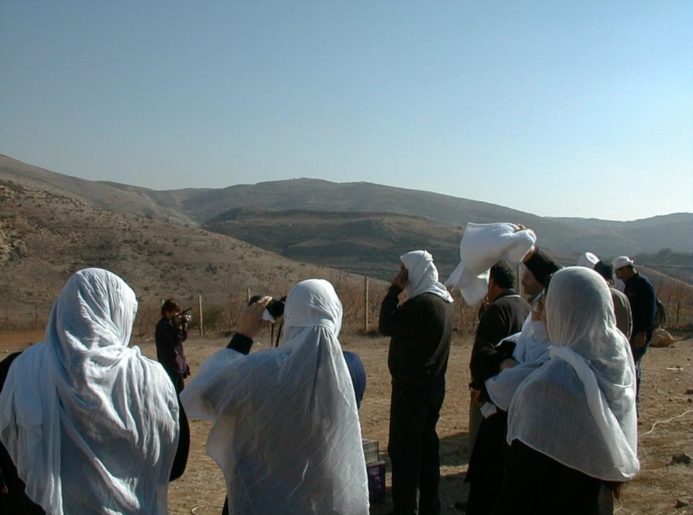
Nature trail in Banias
In addition to appropriating Syrian land and illegally exploiting natural resources, the Israeli authorities misrepresent cultural and historic sites as part of Israel.
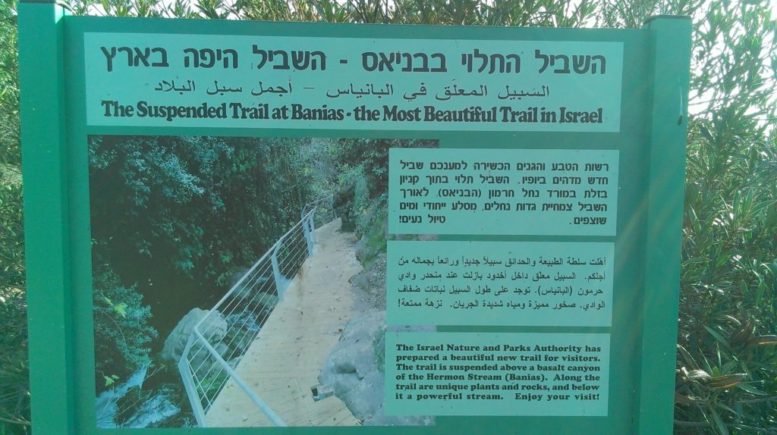
Hotel in Neve Ativ - Illegal Israeli settlement
Rimonim Hotel in the settlement of Neve Ativ built over an Arab cemetery which was part of the destroyed village of Jubatha. Israeli settlements were built in a number of places over destroyed Syrian villages and farms, which in turn meant that Israel had seized control of the land and resources. Each year Israeli authorities attract new settlers with the prospect of new jobs and encourage their arrival through socio-economic incentives.
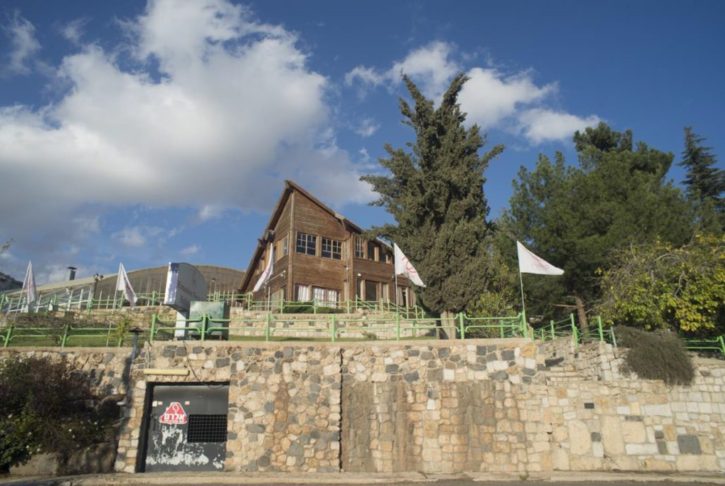
Israeli occupation of Syrian Golan in 1967
During the first few days of the 1967 Arab Israeli War, at an Israeli Military General meeting, General Rehabam Zeevi declared that the Syrian Golan had to be cleared of its population. Israel seized and occupied 1,250 km2 of the Syrian Golan (roughly 70% of the Syrian Golan, containing 344 villages and farms). Israel secured control of the natural resources and cleared the indigenous population. Approximately 131,000 native Syrian inhabitants (out of 137,000) were forcibly transferred or displaced from the Occupied Syrian Golan.
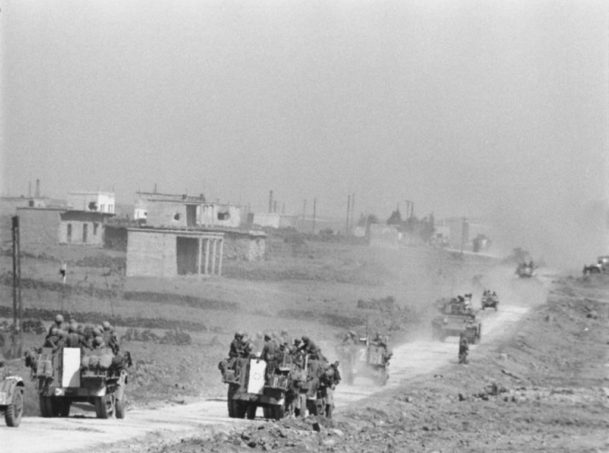
The apple harvest
Since the outbreak of the conflict in Syria, Syrian farmers in the Occupied Syrian Golan have been cut off from a crucial market for their apples in Syria. Farmers receive less money for apples in the Israeli market and struggle to compete with Israeli settlers who receive substantial subsidies from the Israeli government.

Preparation of traditional bread
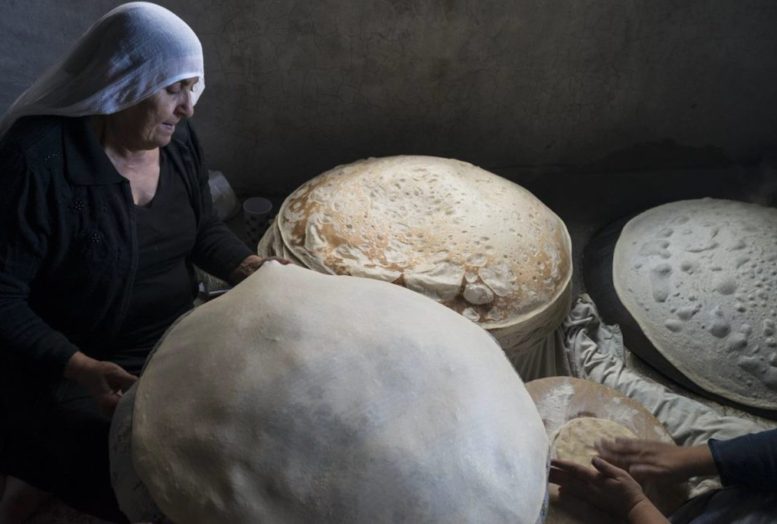
Israeli military outpost
An Israeli military outpost surrounded by mines above houses in the Syrian village of Majdal Shams in the Occupied Syrian Golan. Landmines placed by Israeli occupying forces have constituted a real and lasting threat to the citizens of the Occupied Syrian Golan. These minefields are concentrated in the area around the ceasefire line, but they are also present in Syrian villages and between agricultural fields.
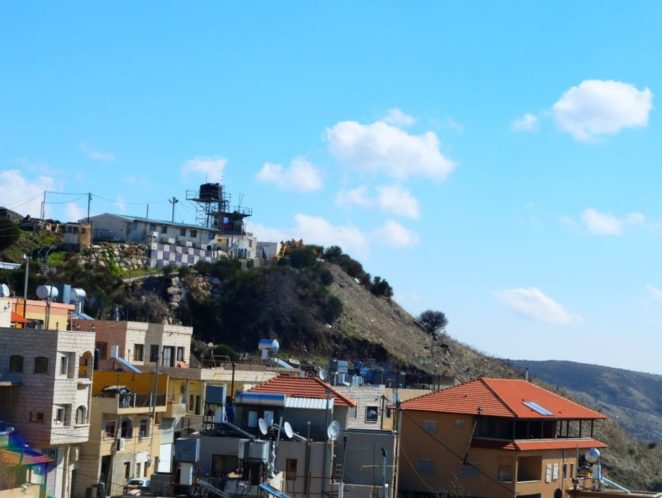
Merom Golan - Illegal Israeli settlement
Today, the indigenous Syrian population only retains control over 4.8% of the Occupied Syrian Golan, the rest has been expropriated for military use or allocated for settlements. In order to maintain the occupation and secure control over the Occupied Syrian Golan’s natural resources, approximately 23,000 Israeli settlers have been illegally relocated to the Occupied Syrian Golan, and accommodated in 34 settlements (33 agricultural settlements and 1 town).
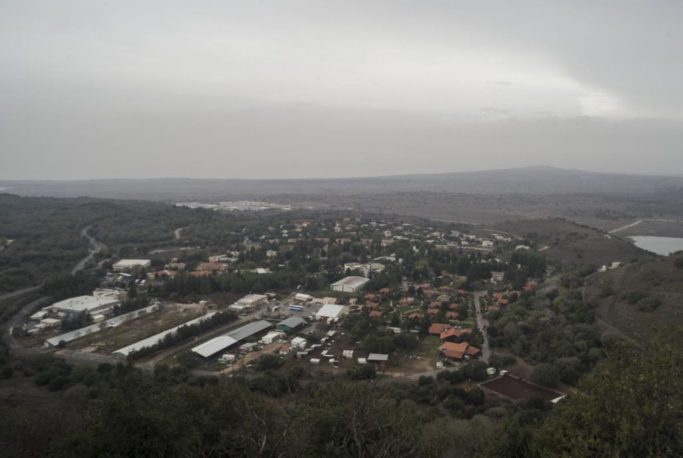
Majdal Shams - Syrian village
Since the Syrian villages cannot expand outwards, in order to meet the necessities of a growing population, the Syrian population is forced to build new houses literally on top of existing ones and on land once used for agriculture. The impact on the local Syrian economy is devastating. Some products, like grapes, are no longer cultivated because of lack of space.
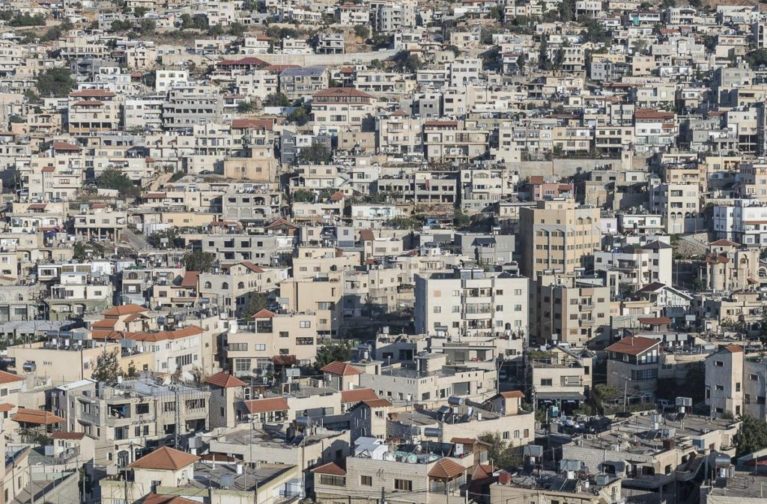
A minefield among Syrian agricultural land
In addition to human casualties, landmines have a severe impact on the local Syrian economy. One Syrian farmer has estimated that since 1967 he has lost more than 50 cattle due to landmines.
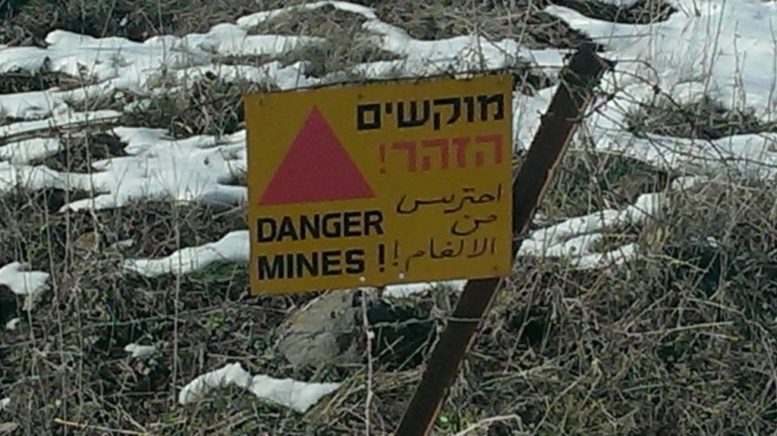
Children playing near a minefield
Children playing in their backyard only a few meters away from mined areas in Syrian village Majdal Shams in the Occupied Syrian Golan. Mines are often moved by natural conditions such as rain, snow or natural earth movements, displacing the mines and rendering safe areas dangerous. The fences are not designed to stop this, and the situation is worsened by the fact that the Syrian Golan is a mountainous area, causing mines placed on the hills to slide downhill, out of the fenced areas.

Naksa day commemoration
On 5 June 2011, up to 1000 Syrian internally displaced persons (IDPs) gathered across the ceasefire line separating the Occupied Syrian Golan from the rest of Syria to commemorate their expulsion from their homes following the 1967 Israeli occupation. A number of people were killed or injured during the day by the Israeli occupation forces.
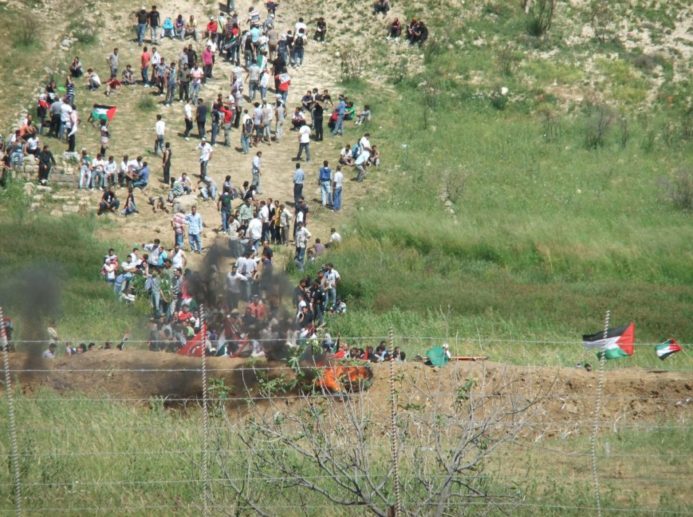
Mosque of Jubatha el Zeit
The mosque of Jubatha El-Zeit before the village was destroyed and the Israeli settlement of Neve Ativ was built on top of its ruins in 1972. Jubatha El-Zeit village was destroyed by the Israeli Army after the war. The village did not pose any security threat to the Israeli occupying forces and there were no major military operations taking place that could have made the destruction of Jubatha an absolute military necessity.
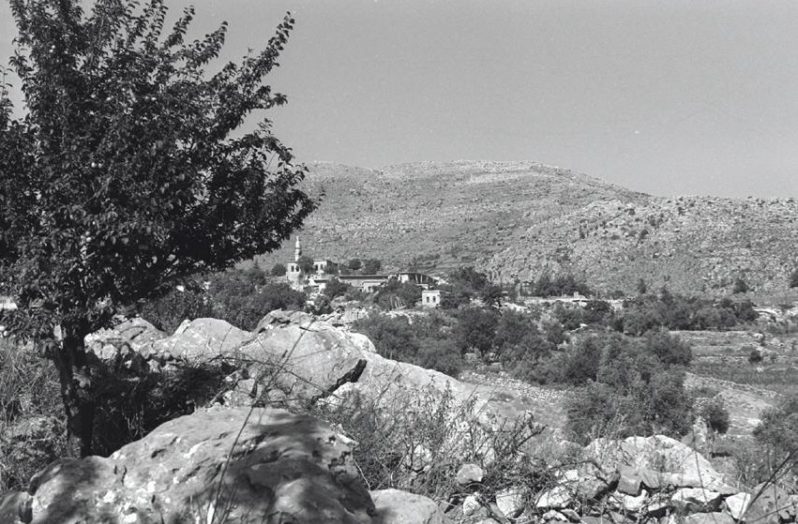
Pumping of Lake Ram
The Israeli national water company Mekorot monopolizes all the water in Israel. The UN condemned Israeli discriminatory measures such as the practice carried out by Mekorot, which channel water from Ram Lake directly to Israeli settler farms at preferential rates, whereas Syrian farmers' use of water from the same company is tightly restricted.
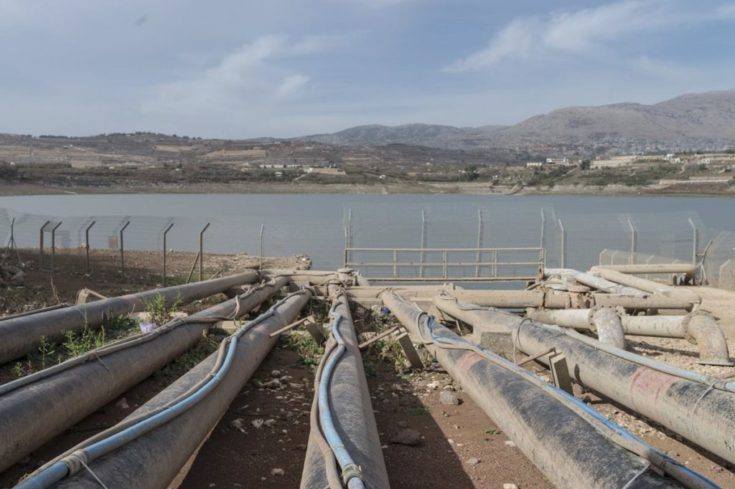
Preparation of mate tea
The preparation of mate tea for some guests.
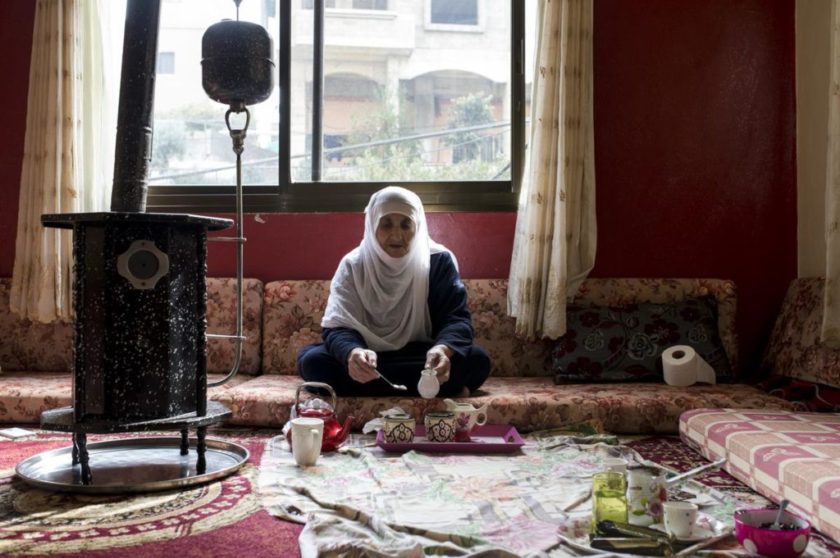
Forcible transfer and displacement
Syrian civilians, hands raised, before Israeli soldiers, leave their homes in the Occupied Syrian Golan. As a result of the mass forcible eviction it is estimated that there are as many as half a million displaced native Syrian Golan exiles currently being denied their right to return by the Israeli authorities.
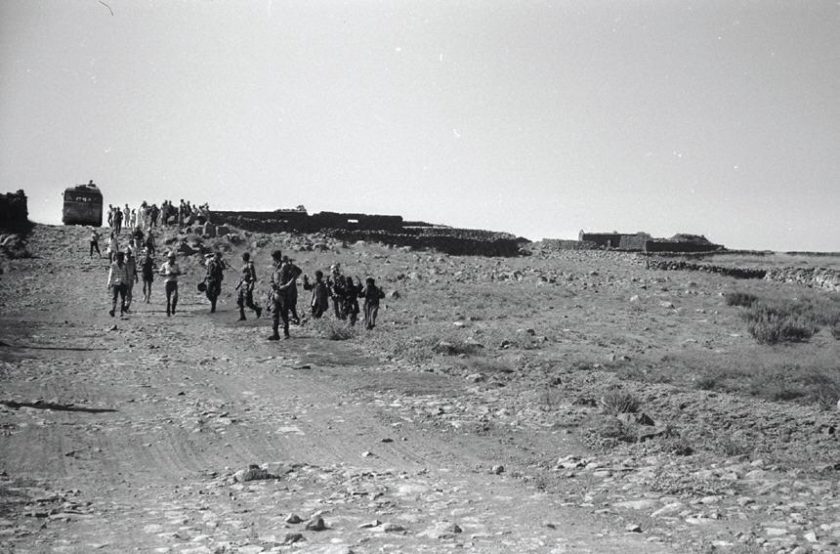
Vertical construction in Syrian villages
Due to discriminatory housing and planning policies the native Syrian inhabitants are unable to obtain permission to expand their villages outwards. Hence, they can only build upwards.
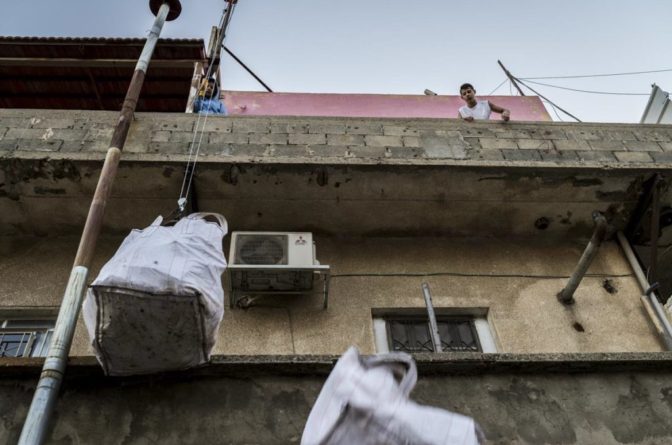
Merom Golan - Illegal Israeli settlement
Israeli settlements with low rise construction and space for green areas is a stark contrast to the severe overcrowding in the remaining Syrian villages.
